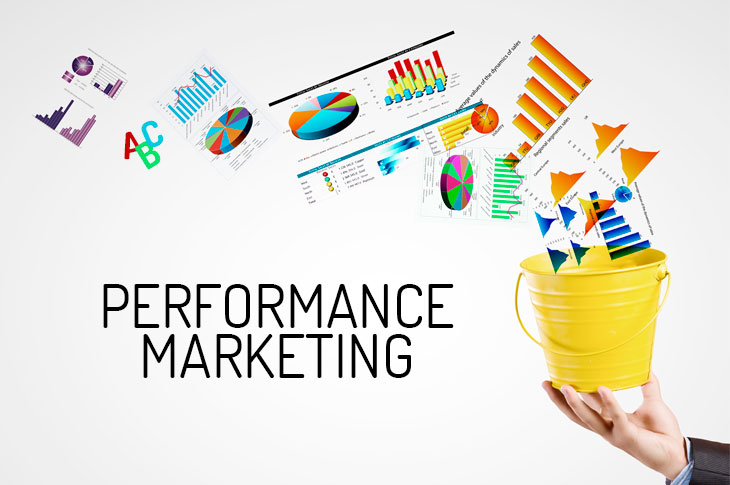Performance Marketing for Beginners – How to Do It

The main aim of most businesses is to turn a profit, and that’s why they utilize numerous marketing tactics. While traditional advertising on various platforms is the most common, this strategy is becoming costly with little return on investment.
Thus, businesses continually look for new strategies to boost sales and brand exposure while saving money. Therefore, it should be no surprise that performance marketing is becoming increasingly popular among businesses. This marketing tactic lowers costs and ensures that brands achieve their objective.
What Is Performance Marketing?
This new but successful online marketing approach complements social media, affiliate marketing, and email marketing. This approach differs from the others in that it only compensates affiliates, influencers, or marketing firms when the campaign’s goal is achieved. A performance marketing platform would aid the company in measuring the campaign’s outcome. Every brand may have a variety of objectives, some of which include bookings, sales, clicks, leads, and engagements.
This digital marketing strategy gives the brand confidence that they are getting their money’s worth because they only make payments once the affiliate completes the specified action. Thus, allowing businesses to save cash for more crucial things and still gain free brand promotion.
How Does Performance Marketing Work?
Performance marketing involves the combined efforts of the merchant (retailer), publishers (affiliates), third-party tracking platforms, and affiliated managers (outsourced program management).
1. The Retailer
The retailer is the brand or company that needs advertising or brand promotion from the affiliate partners. The retailers, also called merchants, will engage with the affiliates, describing their objectives or goals for the company and pay when the affiliates achieve the objectives.
Suppose these merchants wish to be successful with performance marketing. In that case, it is advised that they establish an online presence in other digital marketing channels. This means the company must already have an online awareness that the affiliates will augment. A solid social media presence is an excellent way to start.
2. The Affiliates
They may also be referred to as publishers or influencers. These experts help a brand achieve its objectives through marketing techniques and initiatives. These affiliates can influence the merchant’s performance by using their influencer status, websites, blogs, and social media channels.
However, the merchants must satisfy the requirements of the affiliates. For instance, because influencers use their influence to increase sales, they would only work with respectable brands. This is crucial because they risk alienating their fan base by endorsing dubious businesses and ruining their integrity.
3. Third-party Tracking Platforms
Brands and affiliates need to keep an eye on their digital marketing KPIs and productivity enabling them to know if the performance marketing was successful. Businesses can track and monitor leads, clicks, and sales via third-party platforms like Partnerize, Rakuten Advertising, etc.
These systems also let business owners and affiliate managers create innovative bonus programs, send newsletters, and track returns.
4. Affiliated Managers or OPMs
These affiliate managers oversee the affiliates and the stores. Most brands have staff within the organizations that handle this. Still, they may also decide to use the services of outside businesses that are experts in this field.
Due to their expertise, these marketing firms are superior to the internal personnel. They also have a vast network of connected partners or affiliates, which helps them to get results even faster.
How to Measure Performance Marketing
The ultimate objective of all performance marketing tactics is ROI. You can access performance marketing using various key performance indicators (KPIs). Clicks, sales, downloads, leads, or page views are a few of these metrics.
Here are some typical KPIs and metrics to help you understand how performance marketing pricing functions.
● Pay Per Sale
In business transactions, this is the most frequently employed. This is the sum that the merchant gives the affiliate partners after a sale.
● Pay Per Lead
A lead is a potential customer. Some businesses set up payments based on this parameter. They require affiliates to send leads to their websites so that they can take over the task of converting the leads into actual customers.
● Pay Per Click
This is the price a retailer pays an affiliate for any ad clicks they refer to the desired landing page.
● Pay Per X
Any desired action that the brand requires of the affiliates is referred to in this scenario as “X.” It might be based on website views, reservations, downloads, etc.
● Lifetime Value
This payment is made based on the estimated value of the customer to the brand. The LTV predicts a customer’s future spending based on their behavior and interactions with the brand.
Performance Marketing Channels
The term “performance marketing” refers to a variety of marketing tactics. While some firms use multiple types, they most frequently use one to boost sales. The following is a list of typical performance marketing categories.
1. Native Advertising
Although it is an advertisement, this is done to make it look less like a sponsored ad. Native advertising can blend with the aesthetic of the platform they are displayed on, such as a news or social networking website. To your intended audience, it appears natural when done in this way.
2. Social Media Advertisement
As the use of social media increases, businesses adopting this form of performance marketing will undoubtedly see results. Organizations typically use LinkedIn, Facebook, Instagram, and Twitter platforms to drive traffic and spread awareness.
3. SEO Marketing
Search engine optimization is another strategy marketers use in addition to performance-based advertising. The search engine’s algorithm is used in this tactic to get organic clicks. This differs from paid search marketing, which includes sponsored listings on search engines like Google.
Advantages of Performance Marketing
The benefits of performance marketing are numerous, including:
1. Increases Brand Awareness
Due to the influence of affiliates and marketing agencies, performance marketing allows firms to connect with a larger target audience.
2. It is Measurable
With this type of marketing, brands and affiliates may follow and evaluate each customer’s success throughout the click-to-consume journey and decide where to increase their investment.
3. Less Risk
Brands are confident in obtaining their money’s worth because they only pay the affiliates when the goal is accomplished, lowering risk and increasing ROI.
Conclusion
Performance marketing is a tried-and-true marketing strategy that increases customer engagement, traffic, and purchases. It guarantees that your efforts are concentrated where they will have the most significant impact. Further, it is tailored to ensure efficient spending and entail programs that are likely to produce results.
Thus, as a business owner who has yet to tap into the success of performance marketing, you should give it a shot. It is less expensive and risky and produces the desired, quantifiable results. Suppose you need help approaching performance marketing; this article is a starting guide.






